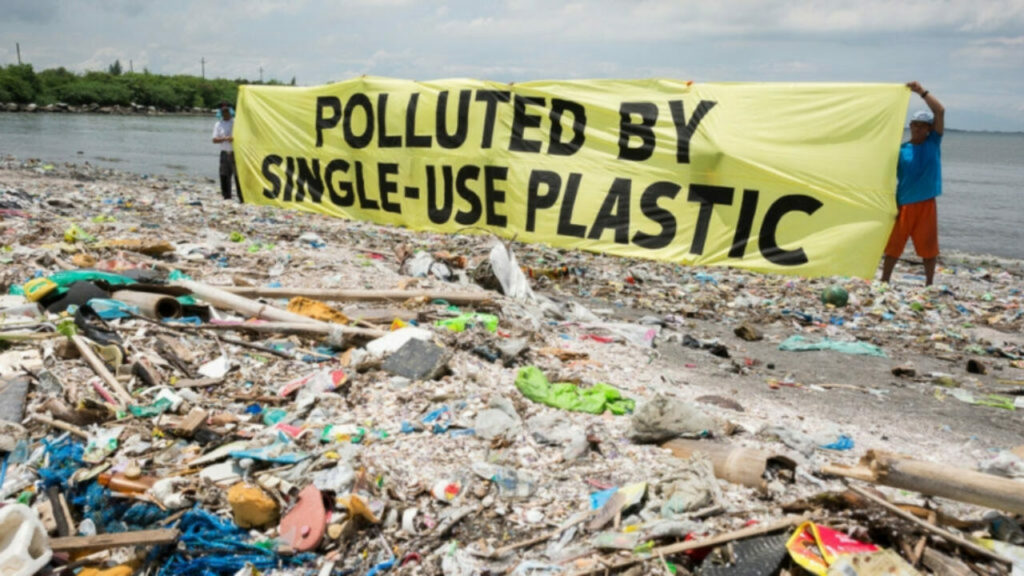A recent study found that the oceans around the world contain more than 171 trillion floating pieces of plastic. The “plastic smog” would weigh about 2.3 million tons if it were collected. Global data gathered from nearly 12,000 sampling points in the Atlantic, Pacific, and Indian oceans as well as the Mediterranean Sea between 1979 and 2019 were examined by a group of international scientists. The study, which was released on Wednesday in the journal PLOS ONE, found that ocean plastic pollution has increased at a “rapid and unprecedented” rate since 2005.
Need for urgent policy:

According to estimates, there are currently 1.1-4.9 million tonnes (or 82-358 trillion) plastic particles in the world. No discernible trend was seen until 1990, followed by a fluctuating but steady trend from that point until 2005 and a sharp rise up until the present, according to the study, which was published on Wednesday in the journal PLOS One. Without immediate policy changes, scientists warned that between now and 2040, the rate at which plastics enter the oceans could increase by roughly 2.6 times.
“This identified acceleration of plastic densities in the world’s oceans, also reported for beaches around the globe, requires urgent international policy interventions,” they wrote.
Only 9% of plastics worldwide are recycled annually, according to Lisa Erdle, director of research and innovation at the 5 Gyres Institute and report author. She claimed that once plastic enters the ocean, it doesn’t decompose but instead tends to fragment into tiny pieces. It’s “really not easy to clean up, we’re stuck with them,” she told the outlet of the particles.
Thus, estimating the precise amount of plastic in the ocean is a challenging task. “The ocean is a complicated environment. There are numerous ocean currents, and they change over time due to the weather and the environment, according to Erdle.
Highest concentration of plastic:
It is impossible to estimate the precise amount of plastic in the ocean. The sea is a complicated environment. There are numerous ocean currents, and they change over time as a result of the weather and the environment, according to Erdle.
Although the researchers noted that the North Atlantic currently has the highest concentration of ocean plastic, more information is still required for regions like the Mediterranean Sea, the Indian Ocean, the South Atlantic, and the South Pacific.
“This research opened my eyes to how difficult it is to measure and characterize plastic in the ocean and underscores the need for real solutions to the problem,” Win Cowger, a research scientist at Moore Institute for Plastic Pollution Research in California and a study author, said in a statement.












